Sudan: The Country Hijacked by Islamists and Targeted for Burial by Iran
This story documents firsthand testimonies from individuals within Sudan who are well-informed about the increasing Iranian influence in their country. We refer to them as "Al-Hajj," "The General," and "The Diplomat" to protect their identities and ensure their safety. These individuals unanimously expressed concerns in their testimonies about the dangers of Iranian influence on their country's future stability, the prospects for a ceasefire between the conflicting parties, and the risks this growing influence poses to regional security in the Middle East and Africa, in a way that cannot be ignored.
by Hazem Salem Dmour
- Release Date – Oct 4, 2024
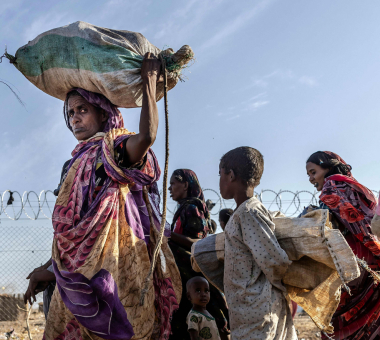
In war-torn Khartoum, the capital of Sudan, you can see the fear in people’s eyes and sense the trepidation in their carefully chosen words when interacting with strangers. I thought about this as I waited in my hotel lobby near the Blue Nile river for the arrival of a car that would take me to a meeting at the home of the one person I could trust to give me verified details about Iran’s security and military involvement in Sudan. I will refer to him as “Al-Hajj.”
As I waited, I reviewed my notes. Everything in Sudan draws one’s attention: its poor standard of living, abysmal poverty rates, halted businesses, rising unemployment, and a frightening lack of public security. The militarization of the country is evident everywhere, even in the city’s wealthier neighborhoods. I can see this looking out the window of my hotel, which is surrounded by the magnificence of the King Farouk Mosque, the Coptic Orthodox Church, and the National Museum of Sudan. This made me ponder an important question: How was this country hijacked from its previous state of peaceful coexistence amongst its neighbors?
Over the past ten years, as a Middle East researcher, I have closely followed Iran’s forays into Africa and its successful efforts to establish connections with military institutions in targeted countries. I observed how Iran’s reach expanded in the region and across the globe by creating networks of “non-state actors” and armed militias that sow chaos and ensure the failure of vital national projects under the banner of “resistance and opposition.”
Iran’s long-term-strategy to “export the revolution” is carefully planned politically, militarily, economically, and in terms of security. It began with the Iran-Iraq war and extended through Lebanon, Iraq, Syria, Yemen, and Hamas’s escalation, all the way to the Gaza conflict and Africa. Establishing security, intelligence, and military infrastructures wherever its tools could reach to build and expand upon an Islamic republic is now bearing fruit, though it is considered poisoned fruit in the eyes of the West, East, and many of its neighbors.
After hours of waiting, I finally received the call that a car was waiting outside the hotel for me. It was driven by a man armed and in military attire, and I was accompanied into the car by armed escorts. As we headed to Al-Hajj’s house, my escorts emphasized the importance of maintaining his privacy and security. After more than 40 minutes of driving through military checkpoints, we arrived at a heavily guarded villa. Al-Hajj greeted me with the customary warmth of the Sudanese people and joked, “Have you gotten used to the heat and the sound of gunfire yet?”
We moved to a secluded corner in the villa’s backyard, away from the house. Al-Hajj dismissed all the guards. After once again stressing the importance of not mentioning his name or any detail that could reveal his identity. Al-Hajj and I began our conversation on the Sudan-Iran issue. Or, to be more precise, he began to dissect the relations between the two countries and I listened.
Al-Hajj began by stating that that the Iranian-Sudanese relations were solidified by the military coup that brought the Islamic Front to power in Sudan in 1989, a period he witnessed first-hand. Both countries were aligned on ideological grounds, particularly in their shared animosity toward the United States. Iran, supporting the military coup and Omar al-Bashir as the new president of Sudan, provided military and humanitarian aid throughout the 1990s. In return, Sudan backed Iran’s ambitions for a nuclear program, voting against UN resolutions condemning Iran, particularly in areas related to human rights.
As for the security and intelligence relationship between Iran and Sudan, Al-Hajj explained that it began in the early 1990s under the leadership of General Dr. Mahdi Ibrahim, founder of Sudan’s security system along with Dr. Nafie Ali Nafie. At the time, Sudan’s security apparatus was divided into an internal security agency known as the National Security Service and an external security agency overseen by the Sudanese Intelligence Service. However, in 2004, Bashir issued a decree merging all security agencies under a unified body called the General Intelligence Service.
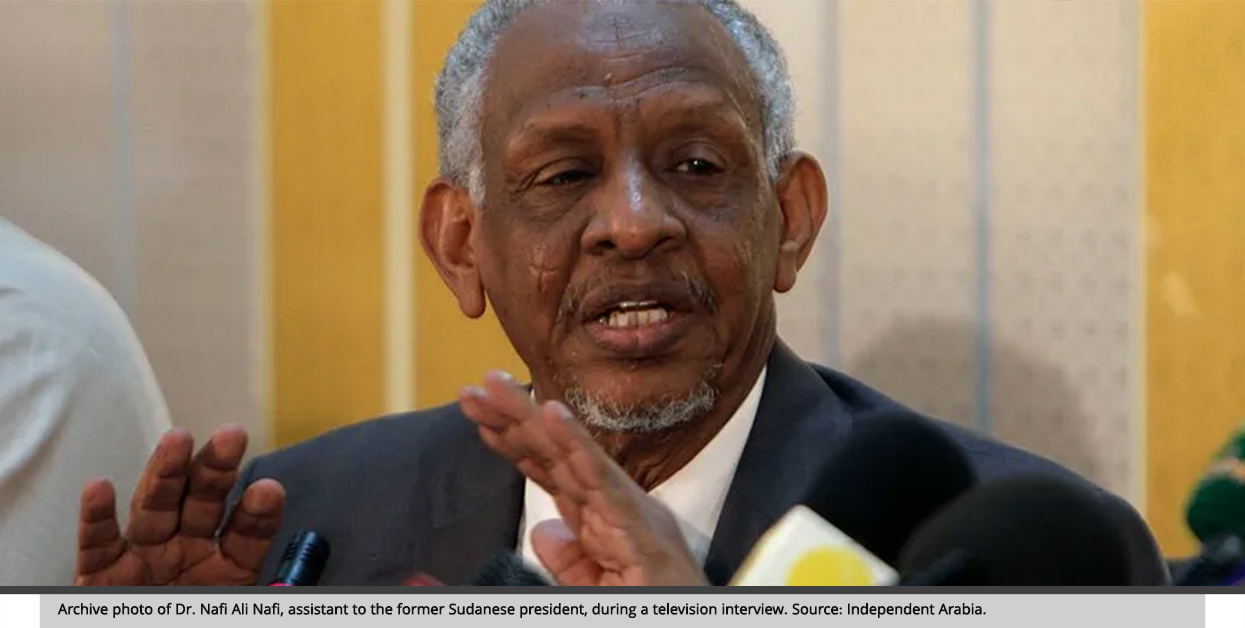
Ibrahim is credited as the architect of Sudanese-Iranian security relations. Iran played a key role in shaping Sudan’s security and intelligence system, modeling it after its own structure in terms of administrative organization, training, and operations. In the early stages, all officers and soldiers were sent to Iran for training. Likewise, Iran sent its officers to Sudan to work as experts and advisors within the nascent Sudanese intelligence service.
During this period, Iran supplied the Sudanese army with weapons and smuggled arms to Iran-affiliated factions throughout the Middle East and Africa. Sudan also became a training ground for extremists worldwide under Iran’s influence, and Iran eventually built military manufacturing facilities on Sudanese soil.
To further consolidate its influence over Sudanese society and religious life, Iran established Husseiniyahs (Shia mosques) in Sudan, which served as a gateway for spreading Shia Islam both domestically and across Africa. This was all done under the umbrella of the Iranian Cultural Center, which established 45 branches and schools, such as the Al-Furqan Schools that remain operational to this day.
There are no accurate statistics on the percentage and number of Shia Muslims in Sudanese society, but various studies suggest they comprise around 1% of the population, though this figure may fluctuate. According to a 2009 Pew Research Center study, the Shia population in Sudan exceeds 1%, while the Global Religious Database’s 2020 update reports that Shia represent about 0.07% of the population. According to the 2022 Religious Freedom Report issued by the U.S. Department of State, this small Shia community mainly resides in the capital, Khartoum.
The official relationship between the two countries, however, ended on January 4, 2016, when Sudanese Foreign Minister Ibrahim Ghandour confirmed to Al Jazeera that Sudan had severed diplomatic relations with Iran due to Iran’s sectarian interventions in the region and its attacks on the Saudi Embassy and consulate in Tehran.
Al-Hajj believes that Khartoum’s official severance of relations in 2016 did not significantly impact Tehran’s security, military, and economic influence over Sudan. This view is corroborated by a high-ranking Sudanese military source, an active general, whom I will refer to as “the General.” “Despite the official announcement of the end of relations between the two countries in 2016,” the General later explained to me, “security and military ties continued through the National Intelligence and Security Service (NISS) via a front organization named the Afro-Arab Union for Digital Media.”
The union was led by a board of directors chaired by the wife of the man who headed NISS, Major General Mohamed Atta al-Mawla. The union’s executive management comprised intelligence officers and its executive director was Security Major Ghada Abdel Monem. The union reported directly to the intelligence director and functioned for three years (2016–2019) as a security and military channel facilitating Iran’s operations in Sudan.
All Iranian military, security experts, and advisors were brought in under the guise of being media personnel affiliated with the union. This arrangement continued until the fall of Bashir’s government in April 2019, at which point the union was dissolved and relations were severed, only to be reinstated in 2020 under the supervision of Sudanese military intelligence.
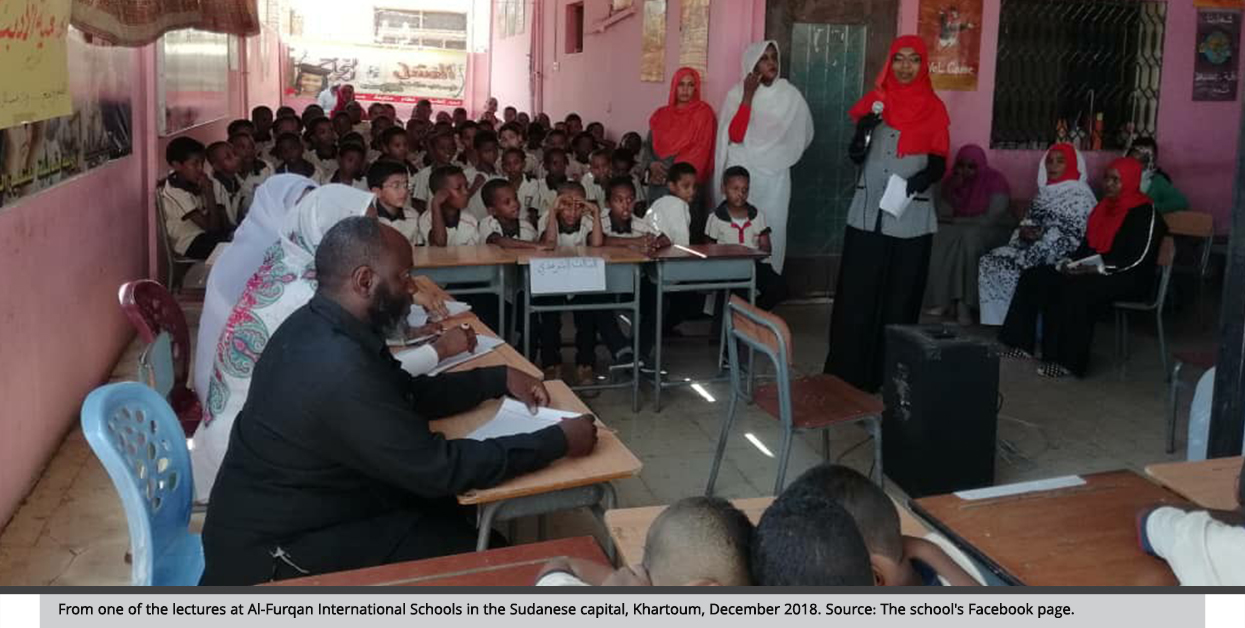
The justification presented by the Sudanese security community in 2016 for the necessity of maintaining military and security relations with Tehran was that Iran was a key part of the Resistance Axis, and they could not abandon this alliance even if political relations between Tehran and Khartoum had ended. For this reason, the security and military institutions ensured the continuation of these relations for mutual economic and military benefits. This began by enabling Iranian Revolutionary Guard members involved in military manufacturing in Sudan to train and supply Hezbollah and Hamas with the necessary resources in exchange for economic, military, and intelligence support for Sudan.
After the revolution in Sudan in December 2018 and the ousting of al-Bashir as president in January 2019, military intelligence and military security took over the communication file with the Iranians. Here, I find a consistency between Al-Hajj’s account of events and that of the General.
In a related context, it can be noted that direct supervision of the relationship from the Iranian side was entrusted to Qasem Soleimani until his assassination in January 2020. Afterward, Brigadier General Esmail Qaani took over supervision. All communications between the two sides were conducted through the Iranian ambassador in Beirut, Mojtaba Amani, who was injured in the explosion of pagers in Lebanon on September 17, according to the Iranian Fars News Agency. Al-Hajj said it is likely, due to the exposure Lebanon is suffering from as a result of Israel’s intelligence superiority over the communication infrastructure in the country, that the point of contact between the two sides has been changed or reset to another location.
Despite the fact that the relationship has experienced periods of rise and fall, the armed conflict between the Sudanese army and the Rapid Support Forces, along with the Gaza war, provided Tehran with an opportunity to make Sudan a new platform for attacks against American, Israeli, and Arab interests.
Al-Hajj states that Iranian military and intelligence support for the Sudanese army in its survival battle against the Rapid Support Forces played an important role in favor of the army. He cites one of the key skirmishes between the two sides as a turning point in the conflict, claiming that Iranian military and intelligence support enabled the army to achieve significant breakthroughs in the course of the battles. This was especially evident after the army’s attack on Omdurman and its seizure of the radio and television building on March 14, 2024, ending the Rapid Support Forces’ control over it, which had been in place since mid-April 2023.
With the shifting dynamics in Sudan and the change in the balance of power, the armed conflict, which has escalated into a civil war, has reshuffled alliances within the country. The conflict has brought Islamists back into high-ranking positions, with their influence growing significantly as the war continues. They have been fighting alongside the Sudanese army against the Rapid Support Forces, particularly the Brotherhood Brigades affiliated with the Sudanese Islamic Movement, locally known as Kizan. Civilian politicians, including those from the Forces for Freedom and Change, a civilian and rebel coalition opposed to military rule, accuse the Islamists of controlling the decision-making apparatus within the army after the war. This has largely contributed to the failure of all international and regional efforts to initiate dialogue and propose solutions to the civil war, whether through the Jeddah talks, the IGAD initiative, or the Egypt Conference.
Al-Hajj, who has spent 40 years in politics, military service, and involvement in foreign security, said the course of the war has become unpredictable. The Islamists are aligned with Iran as a state and ideology, seeking to strengthen Tehran’s power, protect its interests, and expand its influence. They have strong relationships with other Islamic organizations in the region, such as Hamas, al-Qaeda, Hezbollah, and the Houthi movement. These relationships deepened and became more intertwined after the Gaza War and the assassination of the political leader of Hamas, Palestinian Ismail Haniyeh, in Tehran on July 31, as well as a series of Israeli military strikes on Lebanon, which within one month resulted in the killing of 18 Hezbollah leaders, including Secretary-General Hassan Nasrallah on September 27.
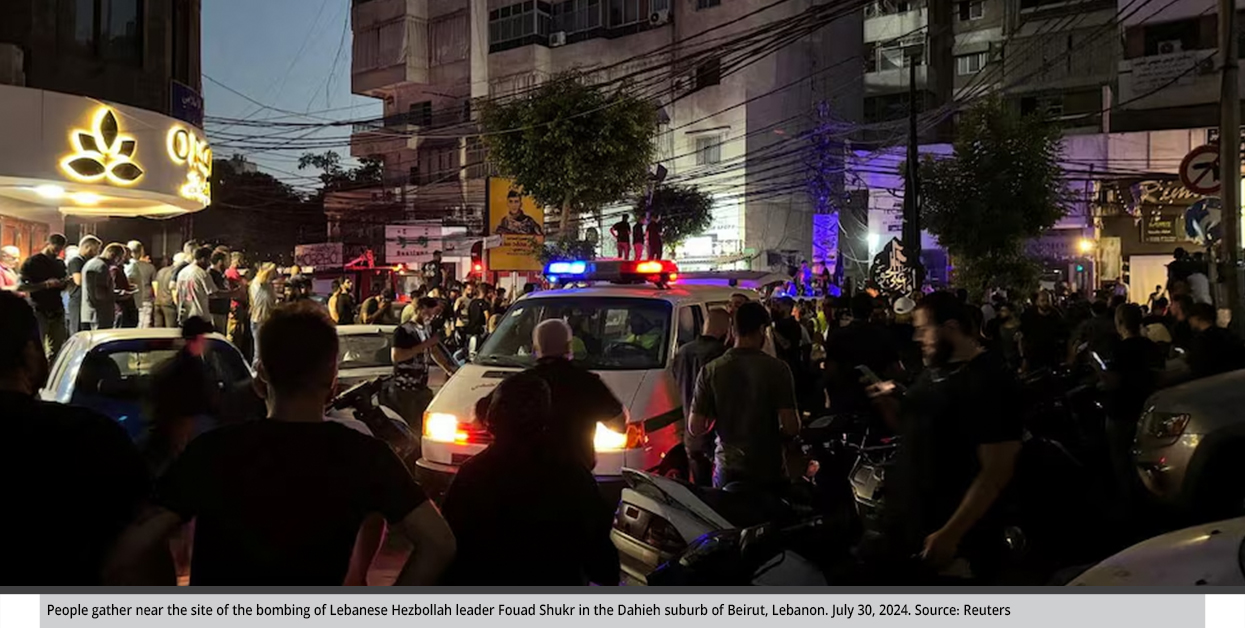
All of the above brings me back to a 2012 book by the American intelligence officer Stephen O’Hern, titled “The Iranian Revolutionary Guard: The Threat That Grows While America Sleeps.” In the book, O’Hern asserts that Iran brought Osama bin Laden into Sudan after the Iranian Revolutionary Guard struck a deal with Hassan al-Turabi (1932–2016), leader of Sudan’s National Islamic Front, in which Tehran would provide millions of dollars for training centers and arms transfers that would turn Sudan into an Iranian launchpad for the rest of the African continent.
Today, the Persian strategy of conflict—exporting extremism and terrorism, and promoting the existence of rogue states—is repeating itself, but with different methods and new tools.
A source claims to have met with a group of American intelligence officers in the late 1990s, before the events of 9/11. My source informed them that Sudan would become a central hub for jihadist Salafism. During al-Bashir’s regime, the Muslim Brotherhood believed they had secured a country governed through the International Organization of the Muslim Brotherhood and were planning to launch from it to dominate other countries. Therefore, Iran viewed Sudan early on as a strategic ally that would help it achieve its aspirations and export its revolution all the way to Mecca, redirecting Muslims worldwide to Iran, which it claimed would lead the Islamic world as its savior from the colonial face of the United States and end the state of Israel.
As midnight approached, fatigue began to show on Al-Hajj’s face. I politely suggested that he could rest and we could continue tomorrow. But he only smiled back and replied, “Can you guarantee that we will be able to have this session tomorrow? Let us continue. Perhaps someone will read or listen.”
Al-Hajj believes that not only have the main actors returned recently, but the circumstances also remarkably resemble those in Sudan in the 1990s. International and regional isolation has enveloped Khartoum, and the lack of trust between the Sudanese army and various actors in peace talk negotiations has become apparent. The army’s need for new allies with experience in operating within complex conflict environments, such as the Iranians, has increased, especially after the losses it suffered during the early stages of the war. Viewing its battle against the Rapid Support Forces as existential, all these factors reinforce the influence of both the Islamists and the Iranians.
Thus, Al-Hajj concluded, the conditions and actors are in place to recreate the scene of the 1990s, but this time it is accompanied by a highly volatile and turbulent African and Middle Eastern environment. To understand the implications of Iranian empowerment in Sudan, Al-Hajj said one must first examine the broader current landscape of Africa. For instance, the continent is experiencing rapid transformations, with increasing challenges to the United States’ capabilities in combating the growing terrorism there. These challenges have been exacerbated by four post-2020 coups in the African nations of Guinea, Mali, Burkina Faso, and Niger. Following the July 2024 withdrawal of American forces from their air base in Niger designated for counter-terrorism, Central Africa has become a quagmire where local governments struggle against terrorist organizations such as ISIS and al-Qaeda, as well as sympathizers seeking to cause chaos.
Observing Iranian activity in its infancy may not provide an accurate reading of our current situation. In this regard, the General stated, “Iran has been operating in Africa for many years. Recently, Iranian drones reached Ethiopia during the government’s war with the Tigray Front between 2020 and 2022, and now they [the drones] are working with the Sudanese army, and I wouldn’t be surprised if they end up in the wrong hands.” He confirms that Tehran continues to support the Somali terrorist group Al-Shabaab and is actively involved with the Islamic Movement of Nigeria, which serves as an Iranian proxy akin to Hezbollah, the Popular Mobilization Forces, and the Houthis.
This comes at a time when Tehran is increasingly in need of restoring its centrality and pivotal role in supporting Islamic groups that oppose the United States and Israel, especially in light of the ongoing conflict in Gaza. The recent failure of its April 13 missile attack on Israel highlighted Iran’s inability to attack either country within their territories, reinforcing Tehran’s need to enhance its capacity for covert operations and attacks while maintaining plausible deniability.
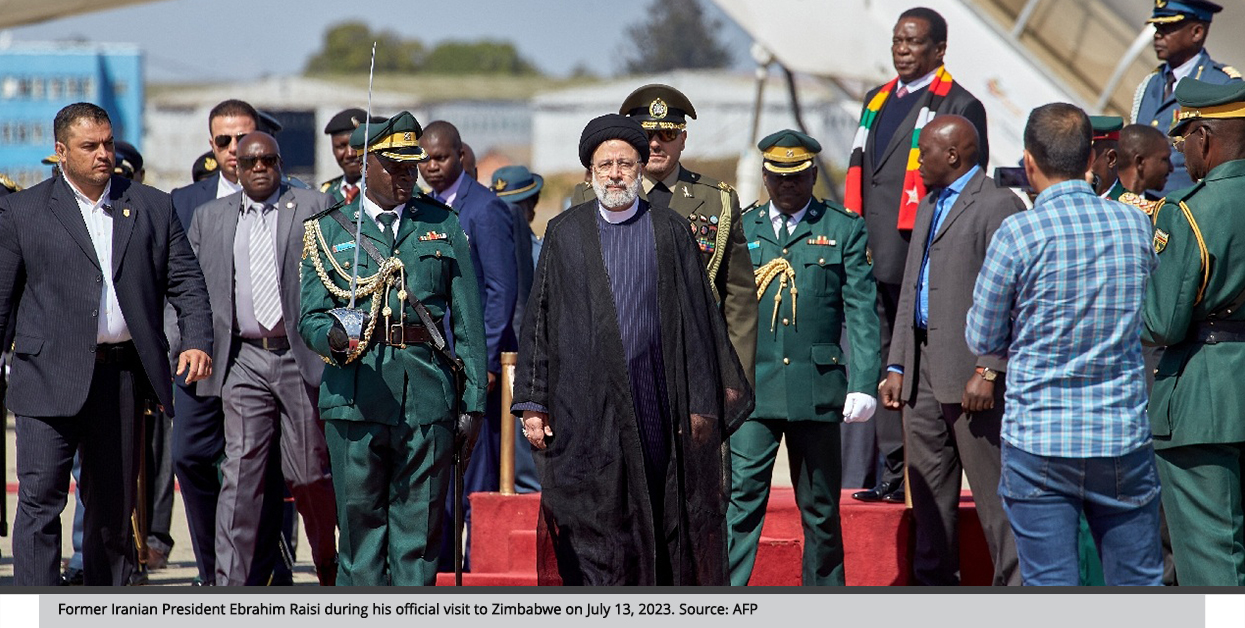
While the African continent is rife with jihadist militants, Iran possesses the expertise, knowledge, and history of organizing, structuring, and supporting them through various means. Strengthening its influence in Sudan amid growing uncertainty and ambiguity would allow Iran to redevelop its infrastructure, enabling it to direct and organize these organizations and groups. This is particularly likely if the Sudanese army succumbs to external pressures and transforms from a national institution into a body comprising various militant groups akin to the Popular Mobilization Forces in Iraq, effectively becoming a proxy for Tehran. In such a scenario, Sudan could revert to being a rogue state that threatens regional stability. Al-Hajj specifically points to Egypt and Saudi Arabia as medium-term Iranian targets.
The Red Sea: The Knot of the Safe Passage Between Iran and Its Interests in Sudan
I have often reflected on the Iranian strategy of approaching countries and offering them assistance, especially during times of armed conflict. This strategy involves providing support that gives the affected party a sense of importance and its ability to change the balance of deterrence and power, thus allowing Iran to impose its conditions for further demands. This is exactly what happened in Sudan.
Al-Hajj told me that Iran’s open appetite for expansion and growth in Sudan is not only governed by the current circumstances and the realities of war, but it is also acknowledges Sudan’s important geopolitical position in the Red Sea environment. In 2012, Iran offered to help Sudan establish air defenses along its Red Sea coast following an airstrike that Khartoum accused Israel of carrying out.
This is where the Houthis come into play in developing infrastructure through the Iranian concept. Al-Hajj noted that the actual relationship between Sudan and the Houthi movement began five years after the so-called Operation Decisive Storm, which started on March 25, 2015. The main topic of discussion between the two parties was Sudanese prisoners in Yemen.
The Sudanese intelligence was managing communications with Brigadier General Yahya Saree, the official spokesman for the Houthis, and Mohammed Abdul Salam, its chief negotiator, as well as Abu Mytham, the director of external security for the Houthi movement who had been originally based in Beirut. It is currently unclear if he is still there after the change of communication points and the Israeli strikes targeting leaders known as part of the Resistance Axis, or if he has moved elsewhere.
Referring back to the General, he believes that in 2020, Sudanese intelligence took over the communication file with Iran, specifically with the Revolutionary Guard. During that period, a set of understandings was reached stating that the Houthis would not target Sudan militarily. In turn, Sudanese military intelligence and the General Intelligence Service, with the approval of Gen. Burhan, agreed to allow arms smuggling to the Houthi movement through the Red Sea under the supervision of Sudanese intelligence.
They facilitated the movement of Houthis through Khartoum Airport to travel outside Sudan after arriving from Yemen via the Red Sea; this included facilitating the arrival and transportation of 17 Houthi leaders from Khartoum Airport on three separate flights to Beirut, as well as treating injured Houthis in Sudan.
In late 2021, the relationship between the two parties evolved, with a focus on efficiently smuggling drone engines for the Houthi movement through the Sudanese port of Flamingo on the Red Sea. The smuggling shipments included precision spare parts and guidance technology for ballistic missiles arriving via fishing boats anchored in the port of Port Sudan. Additionally, the number of Houthis being smuggled from Sudan to Beirut steadily increased to no less than five people a week.
Al-Hajj believes that Sudanese facilitation for the Houthis and Iranians contributed to the development of relationships leading to agreements for the supply of Iranian drones to Sudan and the training of some Sudanese Armed Forces officers. This, in turn, culminated in early 2024 with the formal restoration of full relations between the two countries , as well as an increase in intelligence and military activities.
The pace of Houthi attacks has taken a new turn since entering what the Houthis refer to as the “fifth phase,” particularly in their targeting of commercial ships in the Red Sea. The movement has begun documenting its attacks. On October 3, 2024, the Houthi military media showcased footage of its drone boat attack of the British oil tanker Cordelia Moon in the Red Sea. This reveals a new Houthi media approach aimed primarily at promoting the movement’s ideologies and demonstrating the effectiveness of its military options, despite its failure to halt the war in the Gaza Strip.
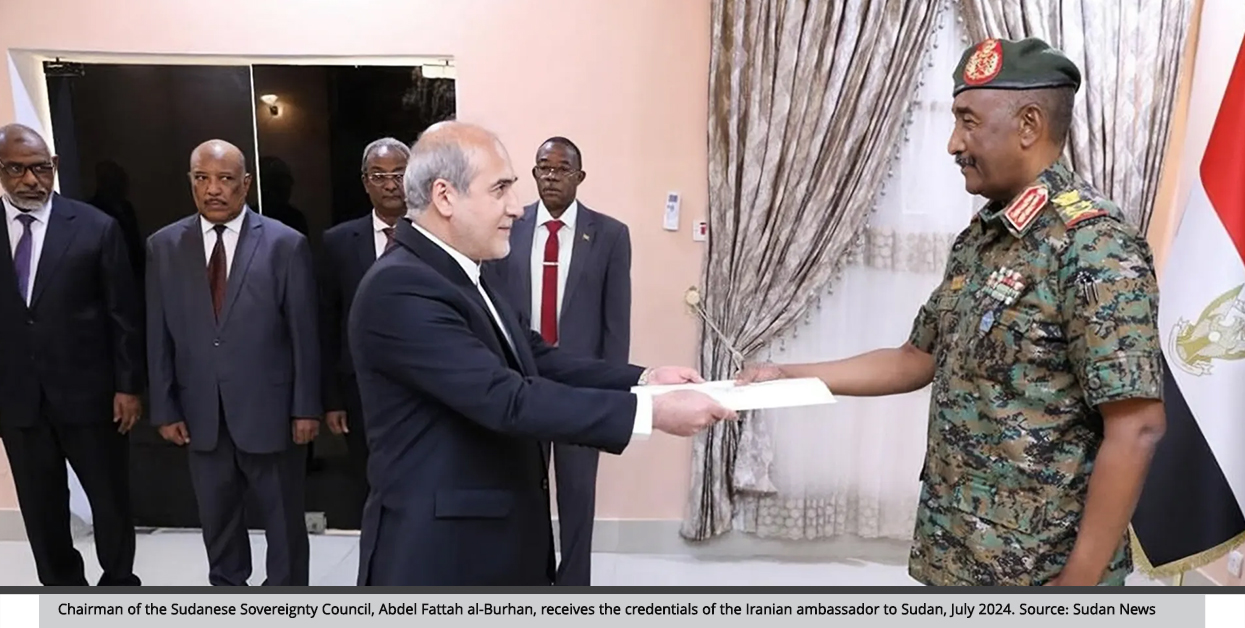
My friend Al-Hajj continues narrating events in an engaging manner, attempting to historically connect the objectives of each event with those that follow. Following the official restoration of relations between the two countries, a high-ranking security officer assigned to oversee the project of supplying Sudan with drones, General Al-Sadiq, who had once served as Gen. Burhan’s office director, travelled to Tehran twice this year, where the old agreement concerning the smuggling of weapons—a trade of drones and precision guidance equipment for missiles—was reaffirmed.
Furthermore, Iran was granted a military base in the Red Sea, ensuring the flow of weapons and military equipment to the Hamas movement. There was also an agreement to position a Sudanese liaison officer in Eritrea to facilitate smuggling operations across the Red Sea, as well as an understanding that the Sudanese Armed Forces stationed in Saudi Arabia would not engage with the Houthis, while providing all necessary support and facilitation for targeting Khalifa Haftar’s plans in Libya.
To verify Al-Hajj’s information and the narrative he presents, it was essential to consult the General, who confirmed that by the end of January 2024, two Mohajer-6 drones entered service and began operating from Wadi Base, one of the largest military bases in Sudan. These drones are currently participating in military operations.
During the same period, an Iranian ship arrived at Port Sudan carrying four Mohajer-6 drones, along with five 130 mm artillery pieces, six 120 mm mortars, and an extensive collection of various munitions. He added that fishing boats traversing the Red Sea are heavily utilized for smuggling weapons, often loaded with fish on the surface while concealing between 600 to 800 assault rifles below deck. Moreover, larger fishing vessels also carry various types of missiles and spare parts for drones.
He claimed that after the normalization of relations between the two countries became public and direct, Iran, through the Sudanese Military Manufacturing Authority, delivered 300,000 fully equipped military uniforms and surveillance and reconnaissance equipment to the Sudanese army.
Regarding securing the transfer of weapons and military equipment to Hamas, there was coordination between the military intelligence and Sudanese intelligence to enlist the expertise of the Rashaida tribe, who settled in Sudan in 1846. Weapons and arms experts are smuggled from Sudan across the Sinai Desert, coordinating with certain tribes within Egypt, leading to tunnels that connect to Gaza.
In this regard, the General, who respects Egyptian leadership and holds it in high regard, questions its decision to support the Sudanese army. He explained, “Egypt supports the Sudanese army in its fight against the Rapid Support Forces due to its need to achieve stability in Sudan and because of the Sudanese army’s supportive stance on Egypt’s position regarding the Grand Ethiopian Renaissance Dam, along with the historical relations between the two sides.”
He paused for a moment to think, then added, “However, Cairo now faces a major challenge in maintaining its interests with the Sudanese army after the war has pushed it to align with the Iranians and Islamists, who have gained significant influence within the Sudanese army. This is especially concerning as Cairo has suffered for decades from radical Islam and the Muslim Brotherhood’s attempts to subvert the Egyptian political system, which largely intersect with the Iranian project, both in the region as a whole and specifically in Egypt. Cairo has paid a heavy price in Sinai due to extremist groups. Therefore, Cairo must determine its position and consider the implications of the Sudanese army regaining control over the country’s geography, which could lead to the presence of a radical Islamist force that may fuel the Muslim Brotherhood’s ambitions to rule Egypt and assist terrorist organizations in reclaiming their former foothold in Sinai.”
Taking a deep breath, the General looked me in the eyes and declared: “Egypt must win this battle and outpace the Iranians.”
For a researcher looking to verify sources, it was necessary for me to find someone within the Sudanese Foreign Ministry who could discuss the visits of the Sudanese foreign minister to Tehran, the first of which took place this year on February 5. During my time in Khartoum, I wanted to meet with an active diplomat involved in external affairs. Through research and mutual friends, one prominent name in diplomatic circles repeatedly emerged, whom I will refer to as “the Diplomat.”
The Diplomat told me that the foreign minister’s delegation to Iran included representatives from Sudan’s security apparatus, military intelligence, and the Al-Barra Bin Malik Brigade, also known as the Al-Bara’ ibn Malik Battalion or Shadows Brigades. This armed group has an ideological extremist affiliation and maintains a network of relationships with Sudanese armed groups that collaborate with the Sudanese army against the Rapid Support Forces.
He further noted that there was an implicit and direct agreement between the Iranian Revolutionary Guard and Sudan’s General Intelligence Service and military intelligence that allowed both countries to withdraw from the agreement. The Al-Barra Bin Malik group was designated to carry out armed military operations in the Red Sea, maintaining a connection to the Revolutionary Guard similar to that of Hezbollah and the Houthis, as well as certain factions in Iraq.
This aligns with what the General reported to me: “A number of members of the Al-Bara’ ibn Malik Battalion were trained in drone operation and explosive maritime boats in Iraq and Lebanon.” Additionally, the foreign minister’s visit to Tehran resulted in an agreement to establish a production line for drones and suicide boats in Port Sudan under Iranian supervision to supply the Houthis and Hamas. In exchange, Iran was granted one million acres of agricultural land from Sudanese territory.
As soon as the name of the Al-Barra Bin Malik Battalion emerged alongside a mix of extremist armed groups, several questions arose in my mind that contribute to understanding the ongoing security chaos in the Middle East and Africa. Is ISIS truly on the ground and fighting alongside the Sudanese army? Does ISIS receive generous funding and have access to new military technologies?
In this regard, several sources I spoke with agreed that the relationship between the Sudanese Islamic movement and extremist Islamic groups is both close and advanced. At different times, these groups have provided funding, training, protection, and intelligence. Institutions such as the Quran Association, the Islamic Call Organization, the Africa University, Omdurman Islamic University, the Al-Birr and Tawasul Organization, the Mudkair Organization, and the Union of Foreign Students provide a ready infrastructure for engaging and accommodating the ideas of the ISIS terrorist organization, which has openly played a role in military operations since the beginning of the war. This is evidenced by the admission of the politician Muhammad Ali al-Jazouli, who is also general-secretary of a Sudanese Islamist group, when he was arrested by the Rapid Support Forces in May 2023.
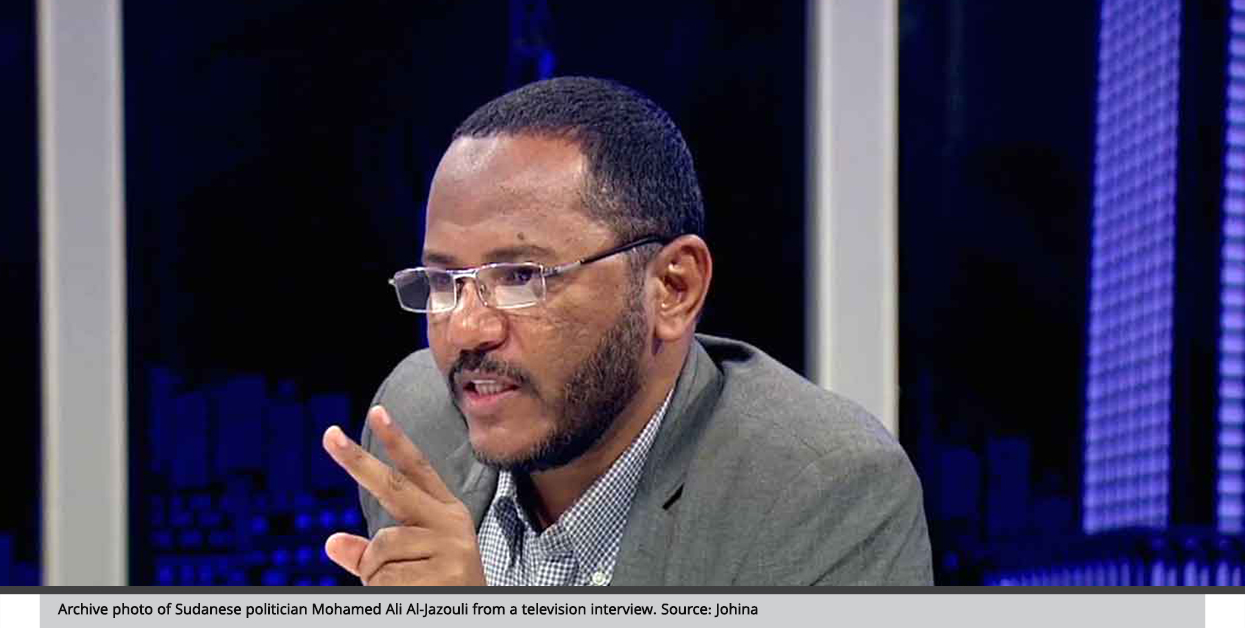
Analyzing the scene of extremism in Sudan and tracking the movements of wanted extremists, it appears that a large number of members of the ISIS terrorist organization from Syria, Iraq, and Afghanistan—estimated to be around 6,000—have been invited to fight alongside the Sudanese army under the guise of studying at Sudanese universities.
Furthermore, a researcher specializing in countering violent extremism in Sudan mentioned to me that a man named Saddam, whose nom de guerre is “Abu Abdullah,” is living in Sudan. Though implicated in the murder of American citizen John Granville and Abdel Rahman Abbas Rahma on January 1, 2008, Saddam has not been arrested, and he and his group were smuggled to Iraq, then Syria, and Libya, and he is now fighting alongside the Sudanese army in Omdurman, the second most populous city in the country.
When I presented the information I had to Al-Hajj, seeking either confirmation or denial, I was surprised when he said to me, “If you want to get rich, just point the Americans to Sudan.” With a sarcastic tone, he added, “Do they even know about us?” He then explained that most of the wanted individuals under the U.S. State Department’s Rewards for Justice program are here in Sudan—including Al-Dasouqi, nicknamed “the Khomeini;” Sheikh Jibril; Imam Bilal; Hashim Arabi, a former colonel in the Syrian intelligence; and Hisham Al-Tijani, the head of the students at the Foreign Students Foundation in Sudan. All were active members of the ISIS terrorist organization.
As is often the case, everyone in this country wants to find a way out of the crisis and convey messages to the world, but they fear assassination. The Diplomat tried to explain why. “In the period leading up to the outbreak of war in Sudan,” he said, “there were attempts by the head of the military council, Abdel Fattah al-Burhan, to improve relations with moderate countries in the region and cleanse the country of the legacy of al-Bashir and the Islamic Front. In October 2020, Khartoum agreed to normalize relations with Israel, and two months later the United States removed Sudan from its list of state sponsors of terrorism. However, the reprieve didn’t last; Sudan is a country where all contradictions come together, and one cannot plan for the future due to the intertwined data, complexities, and multiplicity of actors who come from various and often conflicting backgrounds.”
I tried to reach out to anyone from the Rapid Support Forces to get their account and perspective on what is happening in Sudan, but I was unsuccessful. In fact, I was strongly warned against contacting them due to the complexities of the situation. Asking questions and perhaps a misunderstanding of my position , I was warned, could lead to “challenges” that would be difficult to manage.
How to Analyze the Repercussions of Iranian Control over Sudan
Iran’s clear ambition to control Sudan has serious and long-term repercussions on the security and economic interests of the United States and its Arab partner countries, particularly Egypt and Saudi Arabia. Iran’s control transforms Sudan into an active and influential state regarding the fate of a vital trade corridor for Saudi Arabia, Egypt, Jordan, and Israel. The negative impacts of Iran’s presence are evident in the recent military activities of the Houthis, who now have a pathway for weapon smuggling, leadership transfer, advanced technology, and espionage equipment, forming a new terrorist nexus that will be difficult to dismantle. Moreover, the geographic depth of the Iranians and the Houthis increases. Given that Sudan is the gateway to Africa, Iranian influence will continue to expand there.
The notion that the Iranian-Sudanese agreements have allowed Tehran to gain complete control over the Red Sea cannot be underestimated, as this threatens maritime navigation in both the Red Sea and the Arabian Sea. Consequently, Saudi Arabia’s interests are exposed to multiple levels of military, security, and economic risks. This includes developmental projects under Saudi Vision 2030, where the Saudi coastline along the Red Sea plays a crucial role, as well as the NEOM project and the development of the Red Sea coast project, both of which are part of Saudi Arabia’s plans to diversify its economy away from oil dependence by positioning itself as a hub for tourism, entertainment, and foreign investment.
Additionally, there is a direct impact on the Egyptian economy, as the Suez Canal handles 15% of international shipping traffic, 30% of container trade worldwide, and 40% of trade between Europe and Asia. Revenue from the Suez Canal has sharply declined due to Houthi attacks, amounting to about $2 billion during the 2023–2024 fiscal year, as shipping traffic shifts around the Cape of Good Hope in Africa.
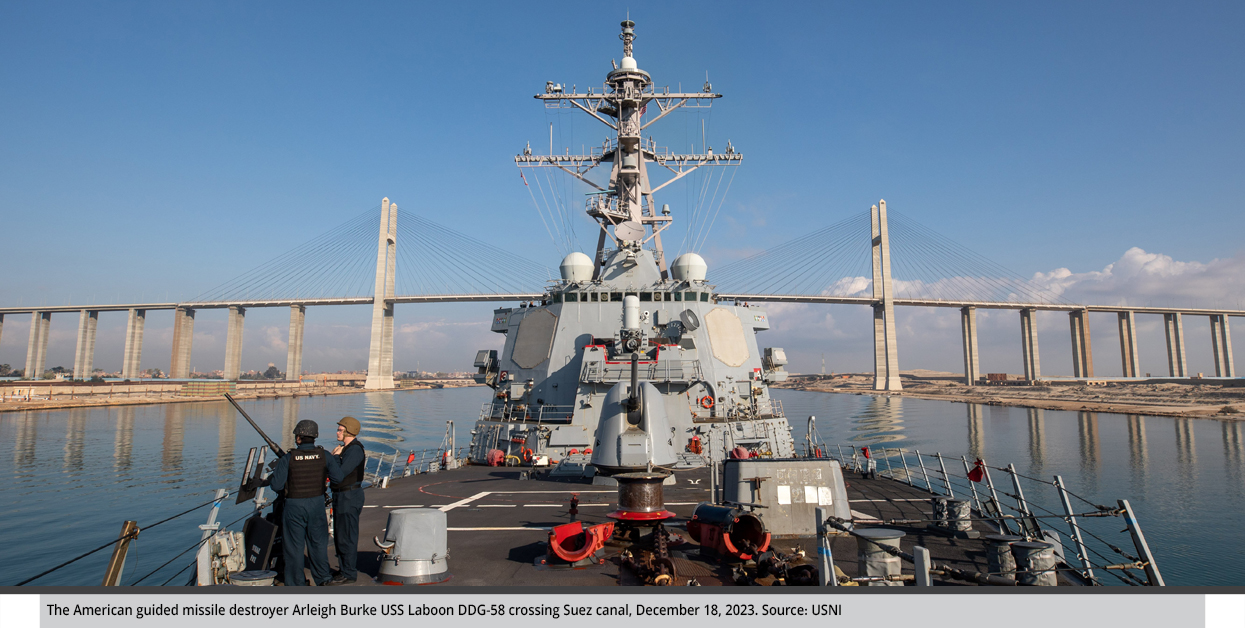
In the same context, the Iranian-Sudanese rapprochement has contributed to Sudan distancing itself from supporting Saudi interests. As previously mentioned, Sudan stood in solidarity with Saudi Arabia and severed its ties with Iran after the 2016 storming of the Saudi Embassy in Tehran. However, it has become clear that Sudan’s support superficial and insincere. Additionally, Sudanese forces participated in the Saudi campaign against the Houthis in Yemen, which also appeared to serve Iranian interests.
We are facing a significant shift in the expansion of Iranian influence in Sudan, which geographically poses a risk to Saudi Arabia. This may well be Iran’s ultimate goal. The Sudanese military’s lack of seriousness in responding to Saudi pressures to halt the war only exacerbates the turmoil in the Red Sea and negatively impacts Saudi national economic and developmental projects.
Furthermore, the expansion of Iranian influence in Sudan increases pressure on its military and weakens its stance against establishing an Iranian naval base, especially given the intensity of the civil war, which heightens the military’s need for Iranian support. This would place the Iranian Revolutionary Guard just under 200 miles (320 kilometers) from Saudi shores. Moreover, the presence of an Iranian naval base would enhance Iran’s intelligence and reconnaissance capabilities in one of the world’s busiest maritime corridors. Consider how much more Iran could accomplish beyond the role it plays in supplying the Houthis with data on passing ships, enabling them to execute their attacks successfully.
Conclusion
Today, after numerous interviews with people whose names I have withheld for their protection and safety, I believe we are on the verge of confronting a violent extremist terrorist nexus targeting all countries worldwide that do not align with the Iranian project.
In the case of Sudan, its maritime borders could place the Red Sea at the mercy of Iran-backed terrorist groups. It would be unrealistic for the United States to overlook this threat, especially at a time when it has mobilized a significant portion of its naval military power to combat the Houthi threats to international navigation. The Houthis have gained support and assistance from Iran, particularly in their use of missile arsenals and drones against military and commercial vessels, as well as Israeli targets. Iran continues to seek to influence the dynamics of the Red Sea, both by affecting the Bab al-Mandeb Strait and by establishing a foothold along its coasts.
Moreover, the increasing Iranian presence in the Red Sea poses an existential threat to energy supplies and facilities, which has been a previous objective for Iran when it enabled the Houthis to target Saudi facilities in Abqaiq and Khurais in 2019. Additionally, the Houthis have attacked several oil tankers in the Red Sea during the escalation accompanying the war in Gaza. In February 2024, the British-owned cargo ship MV Rubymar was hit by two missiles, threatening an environmental disaster due to potential oil leakage that extended over a distance of 18 nautical miles.
However, the Iranian and Houthi activity in the Red Sea has repercussions that extend beyond commercial security and energy safety. There are genuine concerns about threats to the global digital infrastructure, with undersea cables potentially becoming targets for Iran and its agents. The Red Sea floor hosts 16 fiber optic lines, which together account for 17% of all international data transmission lines. “The threat from the Houthis to cut undersea communication cables is serious,” a military source said, “and has been discussed among Sudanese intelligence and the Iranian Revolutionary Guard.”
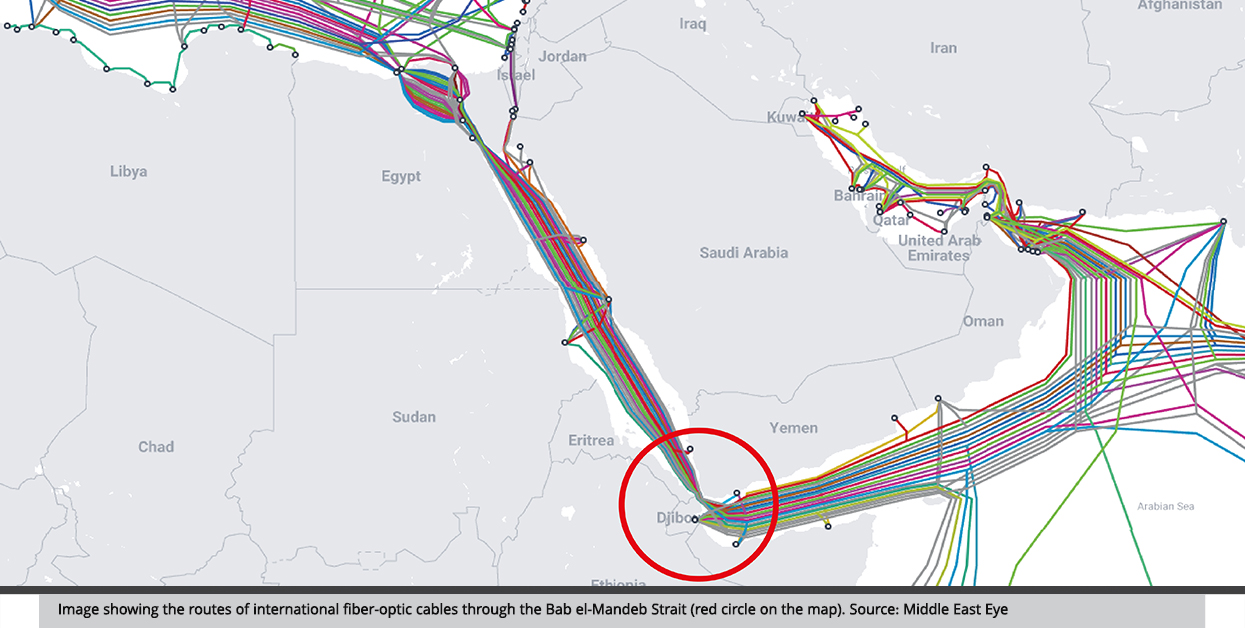
Moreover, the Houthi control extends over the Bab al-Mandeb Strait, which is one of three chokepoints for cables worldwide, linking Europe, India, and East Asia. Contrary to false assumptions that the Houthis lacked the technical and military capabilities to damage undersea cables, they have shown remarkable proficiency for warfare in general during their involvement in the Gaza conflict, particularly after targeting Israel in mid-September 2024 with a hypersonic missile that travelled 1,300 miles (2,040 kilometers) in 11 and a half minutes, according to Houthi military spokesperson Yahya Saree.
On another note, cutting undersea cables that are often no thicker than a garden hose generally does not require any particular expertise, trained personnel, or even professional divers. Some cables lie in shallow waters only 328 feet (100 meters) deep. Lest we forget, three divers were arrested in Egypt in 2013 for trying to sever an undersea cable near the port of Alexandria.
The risks of damaging undersea cables is perhaps more threatening than maritime piracy. The Red Sea carries an estimated 17% of the world’s internet traffic along its fiber pipes, making them a rich target for the Houthis. Damaging these cables could have enormous repercussions on the global economy, as well as civilian, military, and financial information services.
The warning bells went off in December 2023 when Houthi-linked Telegram channels published a map of undersea communication cable networks in the Mediterranean Sea, the Red Sea, the Arabian Sea, and the Gulf accompanied with a threat: “Yemen is in a strategic position, as internet lines connecting entire continents—not just countries—pass nearby.”
Another channel affiliated with the Lebanese Hezbollah published a post asking, “Did you know that the internet lines connecting East and West pass through the Bab al-Mandeb Strait?” This prompted a five-alarm warning from telecommunications companies regarding potential sabotage by the Houthis.
However, the risks to undersea cables may not necessarily stem from intentional acts. The intense maritime warfare in the Red Sea waged by the Houthis could inadvertently damage these cables. The British-owned cargo ship Rubymar, hit this March by a Houthi ballistic missile attack off the coast of Yemen, had its crew evacuate and drop anchor in deep waters. This led to the anchor snagging three undersea cables and dragging them along the seabed, causing a disruption in internet connectivity for millions of people, from nearby East Africa to thousands of miles away in Vietnam.
Finally, it is important to highlight the human cost of the war. According to a report by the International Rescue Committee, since April 2023 the ongoing war has killed 150,000 people, significantly higher than the officially reported 15,000 deaths. Furthermore, 12 million people have lost their homes, with 10 million citizens displaced within Sudan and 2 million more fleeing to neighboring countries. Additionally, 18 million people are facing severe food insecurity amid shortages of food, water, medicine, and fuel.
All of the above does not merely raise a question about Iran’s intervention in Sudan and its ability to assist the Sudanese army in achieving victory and regaining control of the country. It also poses the all-too-unasked question of whether the United States and Middle Eastern countries are prepared to bear the consequences of Iranian intervention in yet another conflict in the region, particularly in a country that has a coastline extending approximately 43 miles (670 kilometers) along the Red Sea.
It was the one question Al-Hajj, the General, and the Diplomat did not even attempt to answer beyond a fatalistic and world-weary shrug of the shoulder.
During the editing and review of this article, on October 1 Iran launched 180 ballistic missiles at Israel in response to its assassination of Hamas’s political bureau leader, Ismail Haniyeh, in Tehran, and Hezbollah’s secretary-general, Hassan Nasrallah, in Beirut. At the time, Hezbollah was facing structural, logistical, and organizational challenges due to Israeli strikes targeting its leaders and weapons storage sites.
The recent Iranian attack differs from its coordinated attack on April 14 in terms of its reach, which took about 15 minutes, and the relatively few interceptions of missiles compared to the first attack, when Israel shot down 99% of the incoming attack drones and missiles. The targeted sites for the October 1 attack were directly related to the ongoing war in Gaza and Lebanon. The attack achieved the element of surprise; Iran entered a state of complete silence beforehand, which was detected by American and Israeli intelligence just hours before the attack began.
This takes us back to the notion that the space Iran was given through the Sudanese gateway contributed to developing Iran’s missile program. What would Al-Hajj, the General, and the Diplomat say? I think they would agree with me that October 1 is but one deadly example of how Tehran has benefited from the period of freedom of movement it has enjoyed in Sudan in recent years.
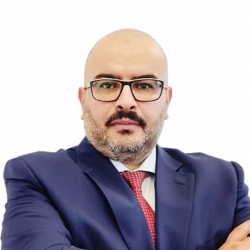
Hazem Salem Dmour
General Manager / Specialized Researcher in International Relations and Strategic Studies
 العربية
العربية